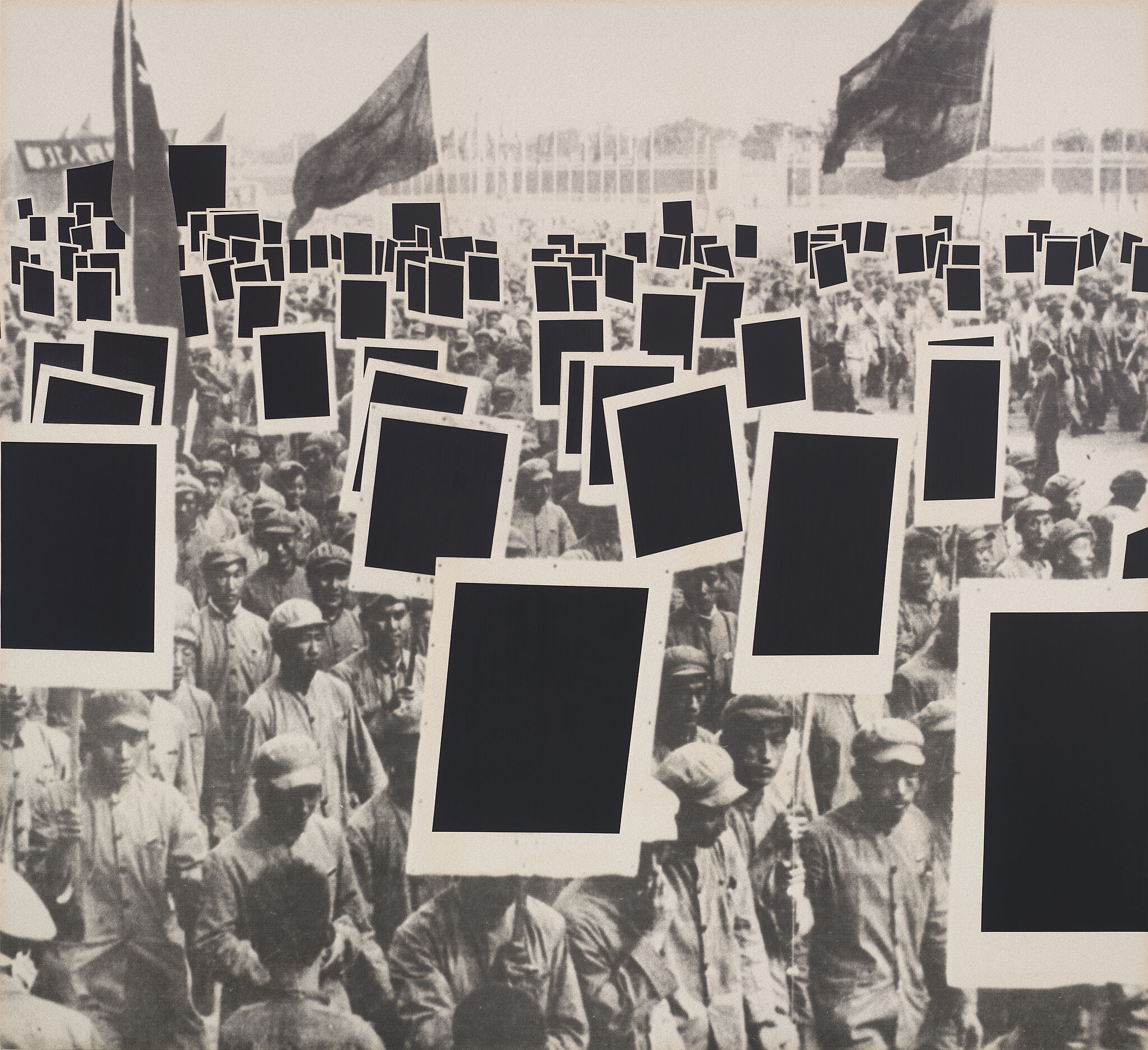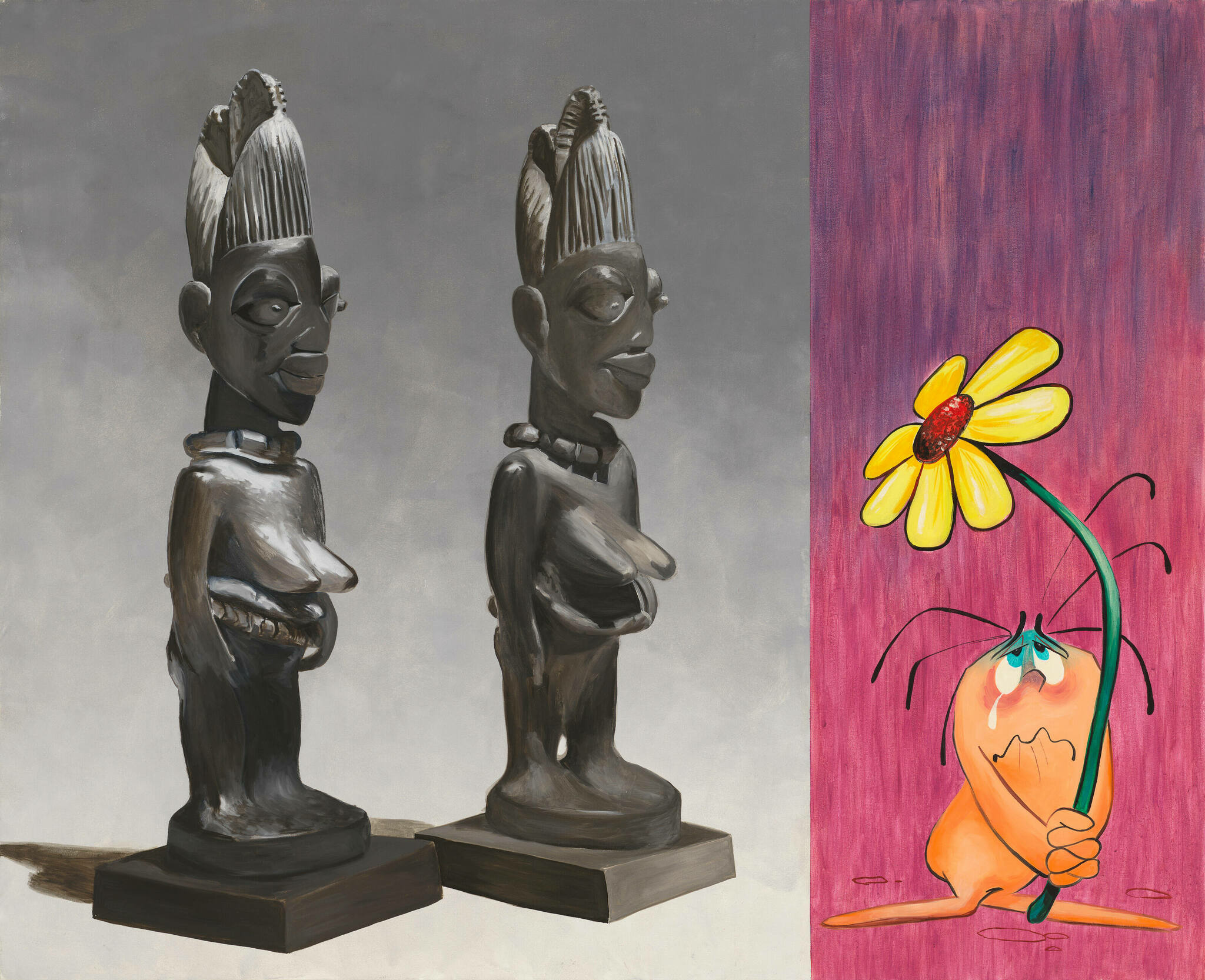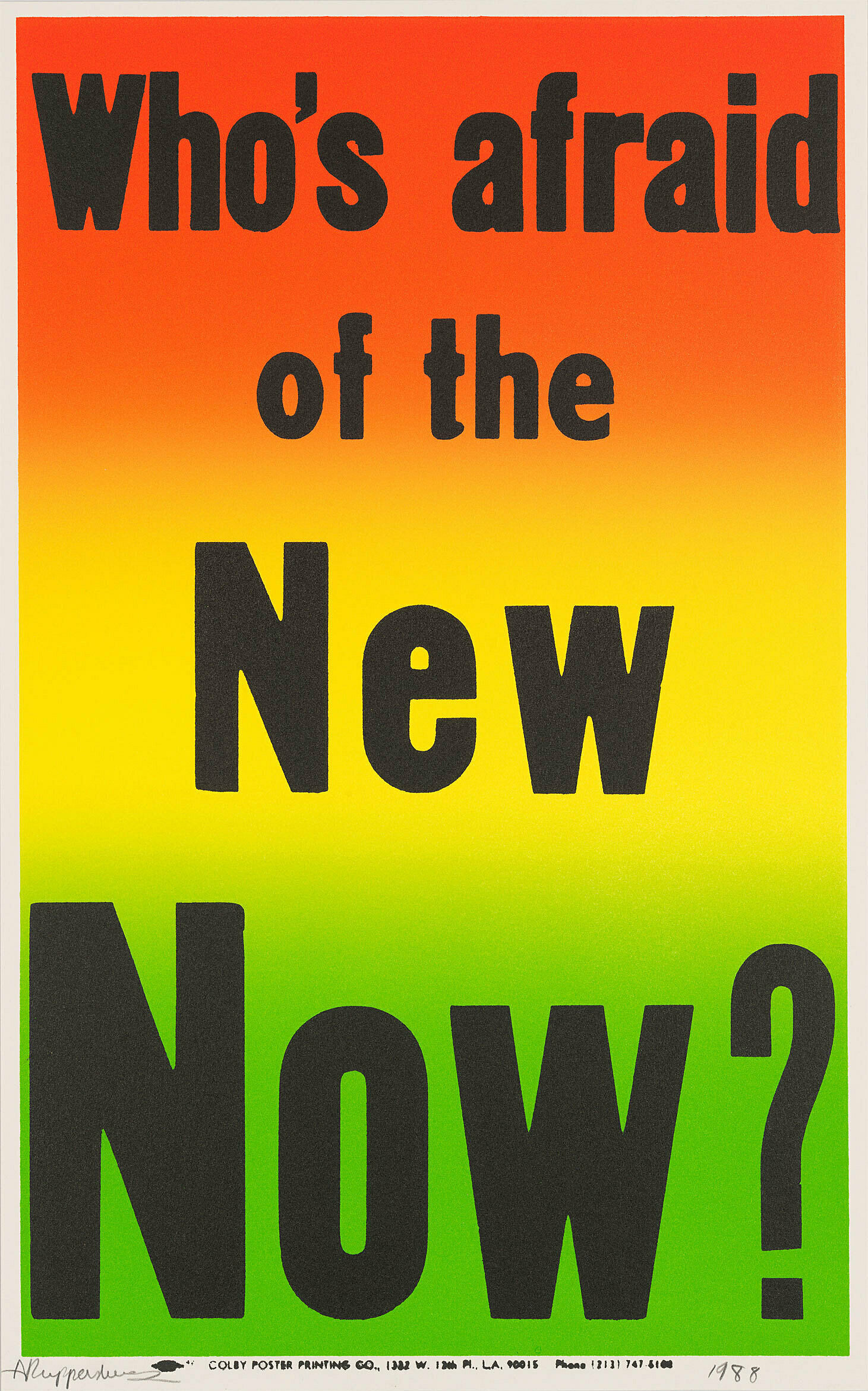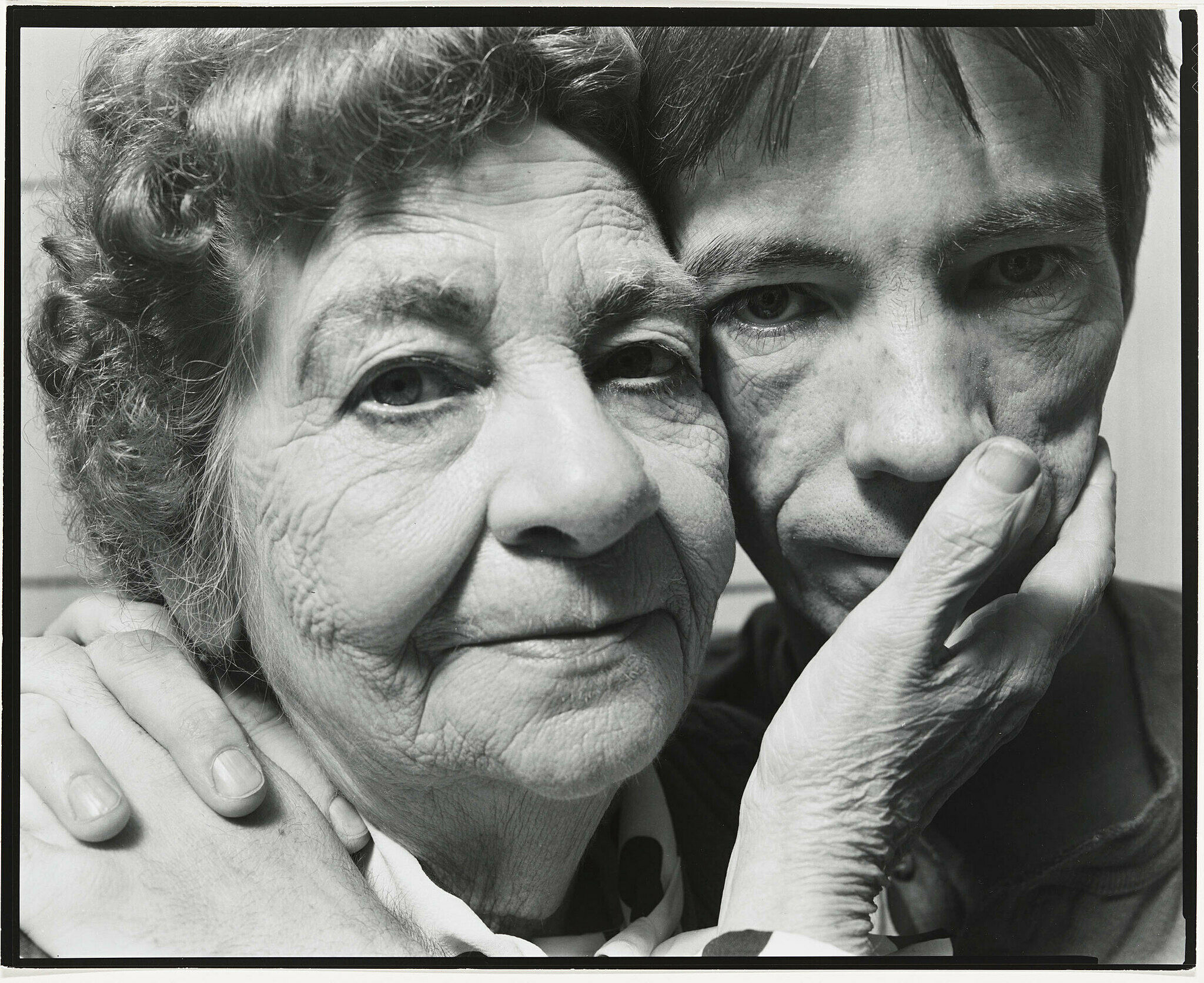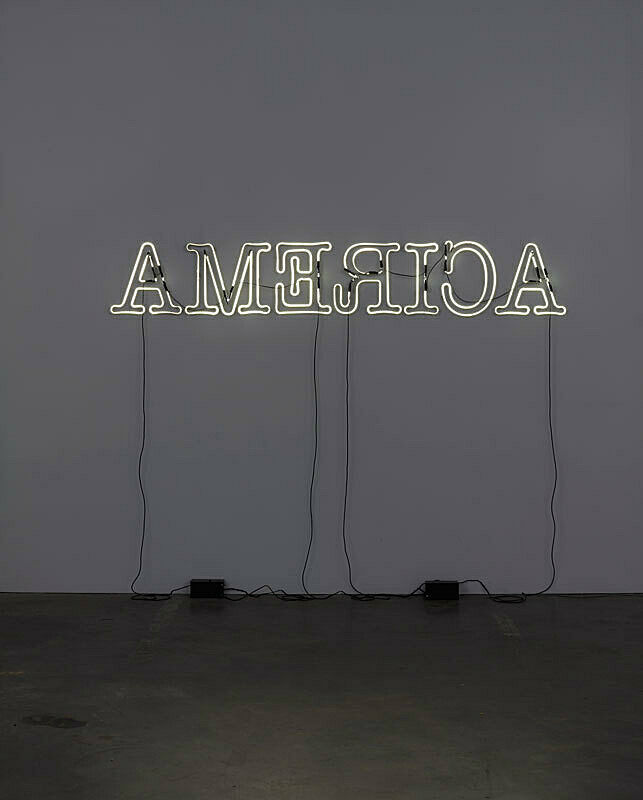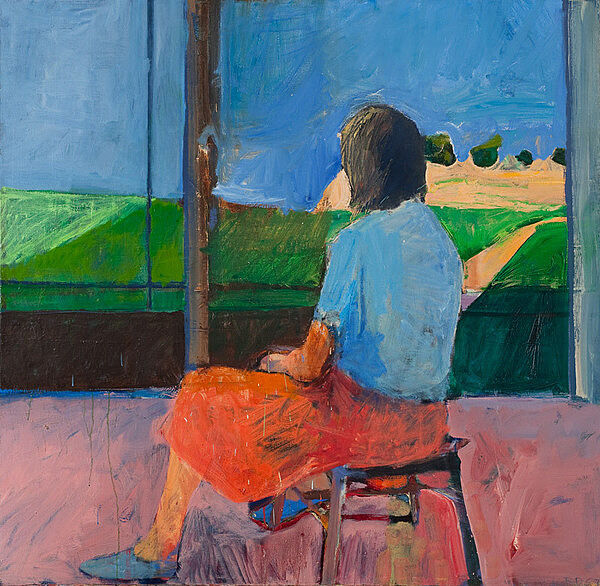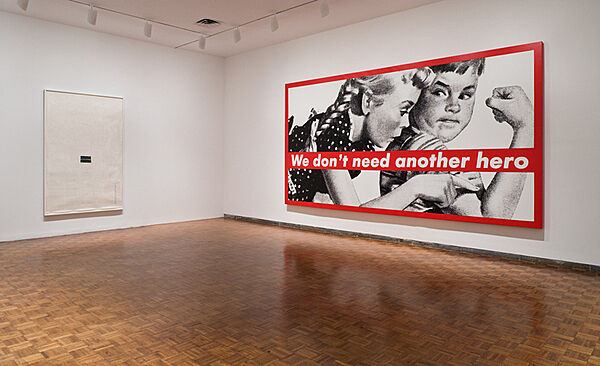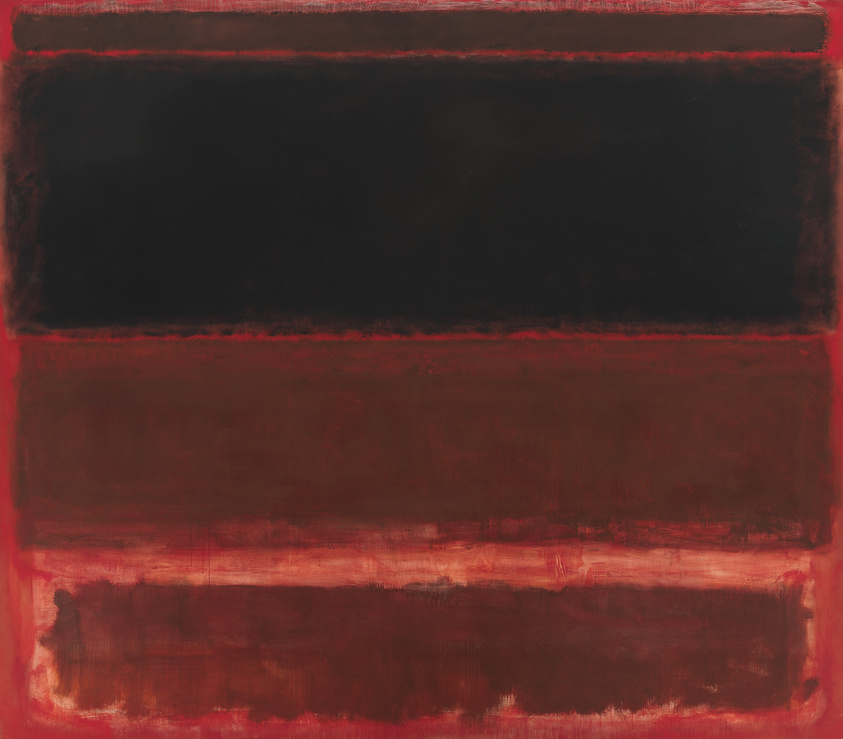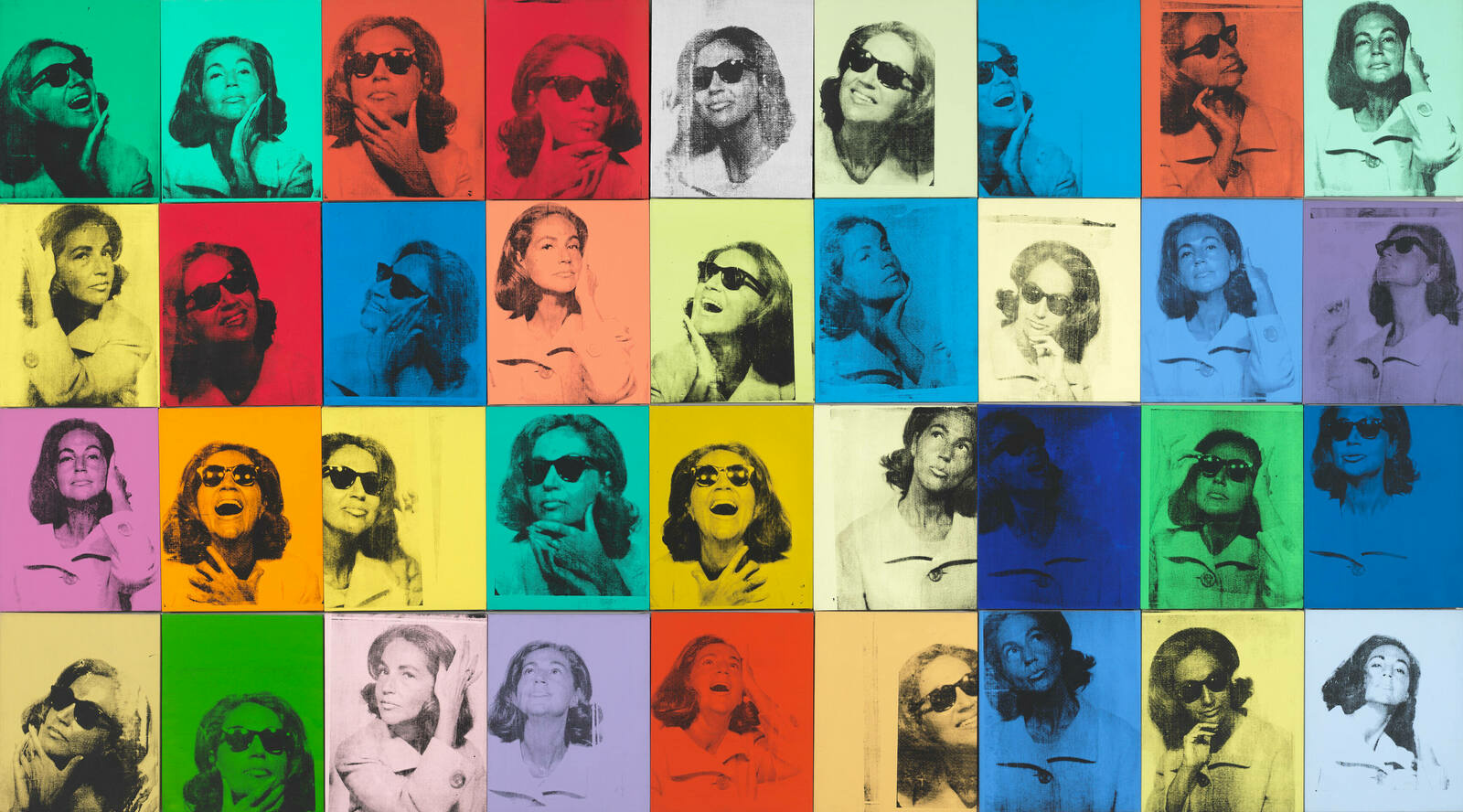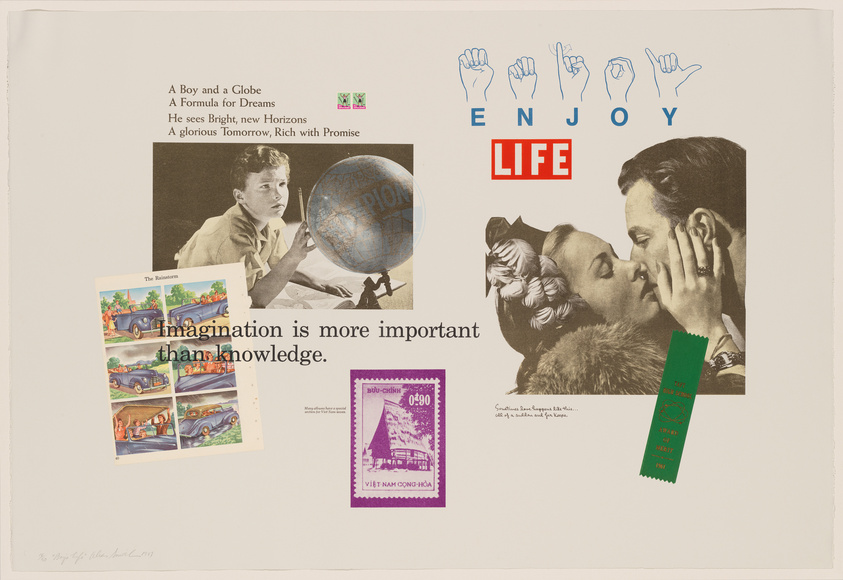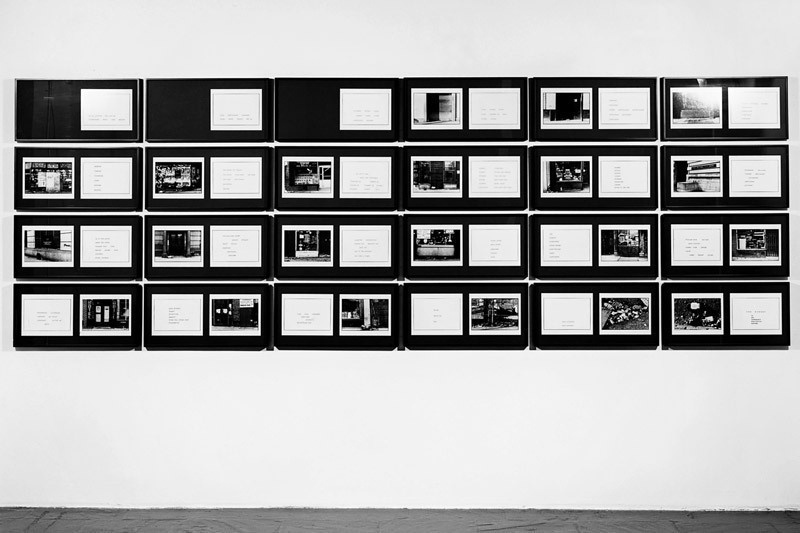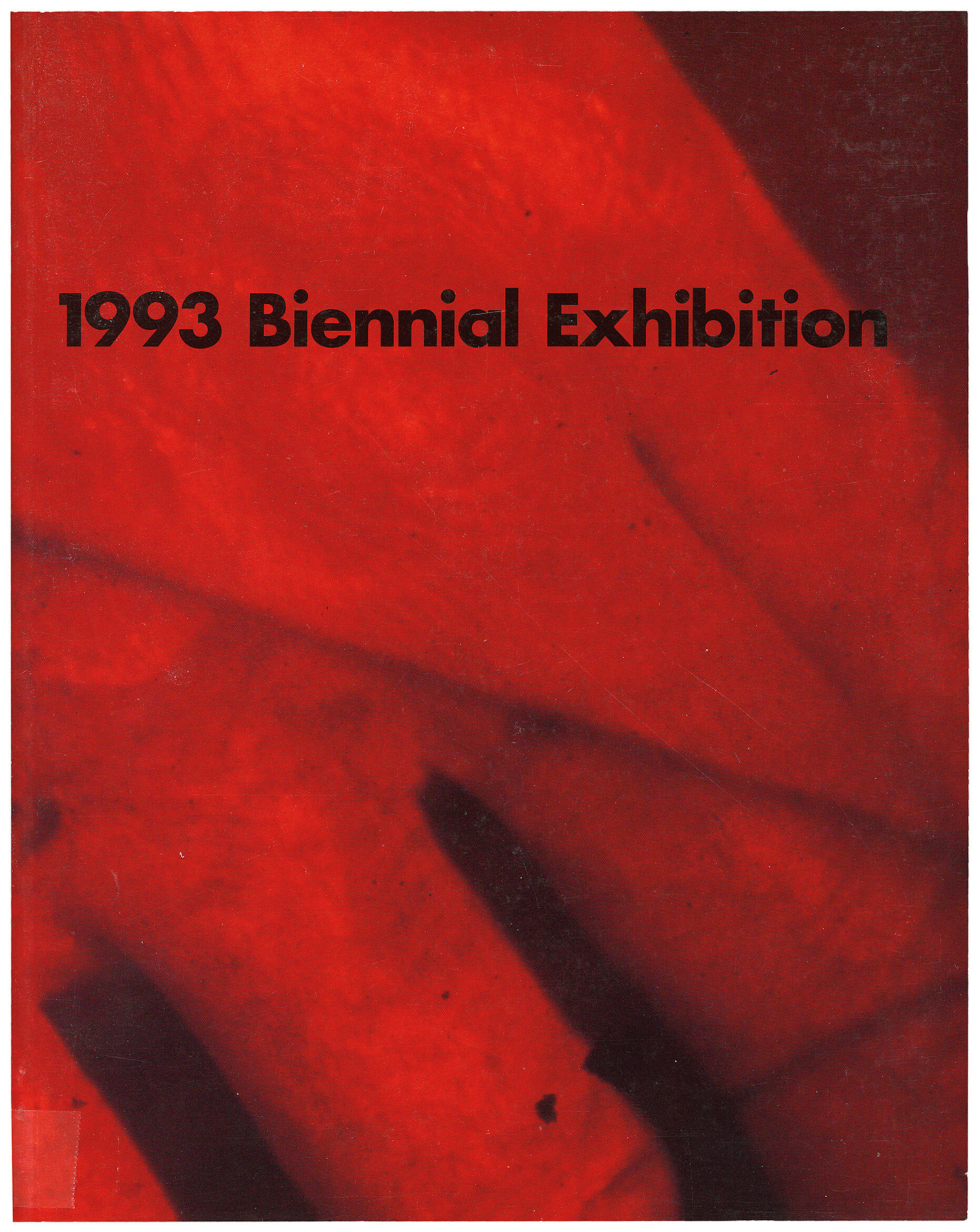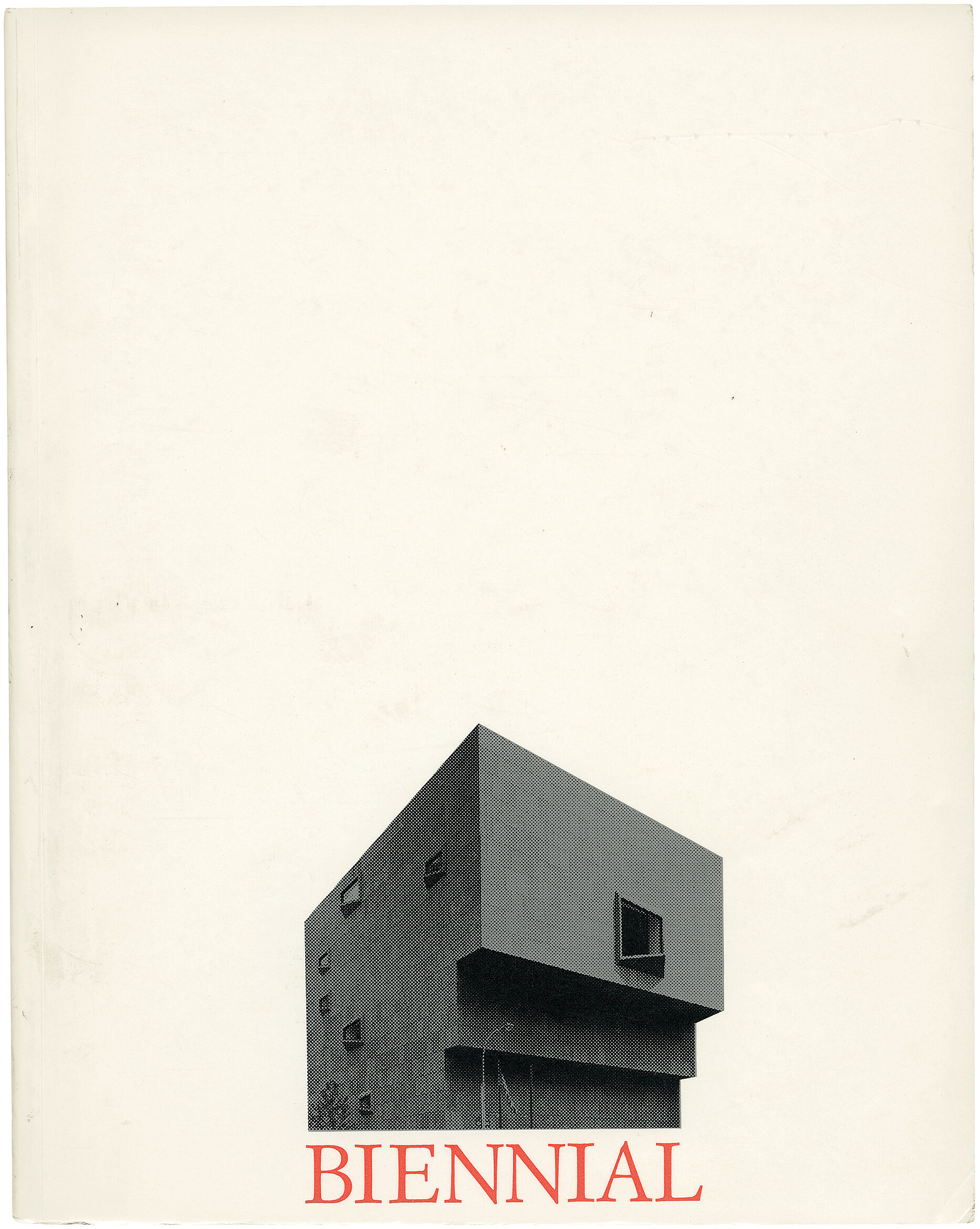Glenn Ligon
1960–
Glenn Ligon uses borrowed texts and images as the basis for evocative works that reflect on American history, literature, and society as well as the fundamental nature of art making and perception. As a college student he painted gestural canvases indebted to Abstract Expressionism; however, his engagement with more conceptual modes of art making during a stint at the Whitney’s Independent Study Program in the mid-1980s led him to confront the limits of abstraction. “I had a crisis of sorts,” he recalled, “when I realized that there was too much of a gap between what I wanted to say and the means I had to say it with.”
For Ligon, the way through this impasse was to introduce language directly into his work. In the first of his seminal “Door Paintings,” he covered wooden doors with phrases from Zora Neale Hurston’s 1928 essay, “How It Feels to Be Colored Me,” in which the African American writer explains how she saw herself as “colored” only after leaving the protective black community in which she was raised. The phrase “I do not always feel colored” repeated in this work suggests the mutability and contingency of Hurston’s—and perhaps anyone’s—sense of self. Ligon subtly conveys this condition through his stenciling technique. The letters at the top of the door sit crisply on the surface, but as he works his way down the stencil becomes covered with oil and smudges the words into darkness and unintelligibility.
Since 2004, Ligon’s use of text and his formal and metaphorical play with light and dark has continued in a series of luminous neon wall reliefs, often partially coated in black paint. In several examples, such as Rückenfigur, Ligon reconfigured the word America to reflect on the ambivalent status of a country that, in his words, is both a “shining beacon” and “dark star.” “I was thinking about Dickens’s ‘the best of times, the worst of times,’” he remarked. “We can elect Barack Obama, and we’re still torturing people in prisons in Cuba. Those things are going on at the same time. Of course, because the piece is a black covering over white neon, it gets read as black America/white America, and those kind of binaries, which is a part of it. I’m not denying that. But I think that maybe if the piece has a kind of richness, it is because of the ambiguity.”
The title Rückenfigur is an art-historical term describing a figure seen from behind, and, accordingly, each of its letters is rotated toward the wall. Yet because the A, M, and I are bilaterally symmetrical they appear to face forward, so that the word uncannily addresses us and turns away at the same time. In this regard, Ligon’s glowing sign poetically captures the twinned sense of identification and alienation the country so often inspires. A sense of gleaming promise is haunted by a shadow of doubt.
Dana Miller and Adam D. Weinberg, Handbook of the Collection (New York: Whitney Museum of American Art, 2015), 231–232.
Introduction
Glenn Ligon (born 1960, pronounced Lie-gōne) is an American conceptual artist whose work explores race, language, desire, sexuality, and identity. Based in New York City, Ligon's work often draws on 20th century literature and speech of 20th century cultural figures such as James Baldwin, Zora Neale Hurston, Gertrude Stein, Jean Genet, and Richard Pryor. He is noted as one of the originators of the term Post-Blackness.
Wikidata identifier
Q5568956
Information from Wikipedia, made available under the Creative Commons Attribution-ShareAlike License . Accessed November 23, 2025.
Introduction
Conceptual artist known for works on the topics of race, desire, sexuality, identity, and language.
Country of birth
United States
Roles
Artist, conceptual artist, installation artist, media artist, mixed-media artist, painter, photographer, video artist
ULAN identifier
500191072
Names
Glenn Ligon
Information from the Getty Research Institute's Union List of Artist Names ® (ULAN), made available under the ODC Attribution License. Accessed November 23, 2025.


